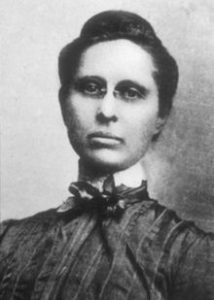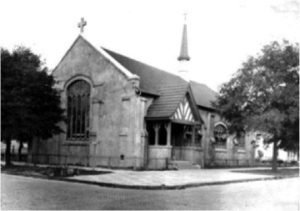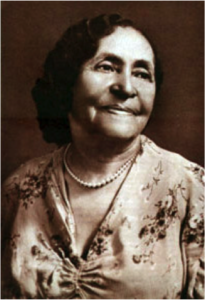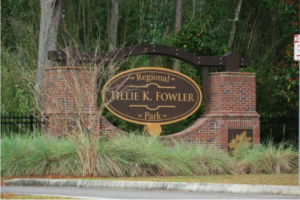By: Brooke Lasky, Intern
March is a month to celebrate all of the achievements of women. In 1981 Congress passed a law that made the beginning week of March 7th Women’s History “Week”. Many argued that women should be appreciated every day of the year and throughout the next 5 years there were many petitions to make the whole month of March “Women’s History Month.” As a result, in 1987 it became official!
Everyday women are making a difference and this is the month we celebrate that; whether past or present. So, let’s take a look back at all the achievements, movements and progress made by women in #DTJax!

Henrietta Dozier (1872 – 1947) was born in Fernandina Beach, Henrietta C. Dozier graduated from the Massachusetts Institute of Technology in 1899 with an advanced degree in architecture. She was one of only three women in the class of 176 students, and she was the only one to graduate.
After working in Atlanta for thirteen years, Henrietta C. Dozier moved her practice to Jacksonville in 1914 where she became the City’s first and foremost woman architect. In 1903, Henrietta C. Dozier designed the All Saints Episcopal Chapel in Atlanta. Her favorite commission, this small chapel was later damaged by fire and incorporated into a larger structure. While still in Atlanta, Henrietta C. Dozier was responsible for the design of Saint Philips Episcopal Church, which was constructed around 1903 at 801 North Pearl Street in Downtown Jacksonville. (Pictured below)

Some of the more noted buildings designed by Henrietta C. Dozier in Jacksonville include the Old Federal Reserve Bank Building (1923 – 1924 in association with Atlanta architect, A. Ten Eyck Brown), Lampru Court Apartments (1924), and residences at 1819 Goodwin Street, 2215 River Boulevard and 1814 Powell Place.

Eartha M.M. White (1876-1974) was an African-American resident of Jacksonville, Florida, and was widely known for her humanitarian and philanthropic endeavors in northeast Florida.
In 1893, upon graduation from Stanton School in Jacksonville, Eartha White moved to New York City for a brief period. Upon returning to Florida in 1896, she decided to continue her education and subsequently graduated from Florida Baptist Academy. With degree in hand, she embarked on a sixteen-year teaching career in Bayard, Florida, and later at Stanton School in Jacksonville.
Her versatility and determination also enabled her to become a licensed real estate broker, the first woman employee of the Afro-American Life Insurance Company in Jacksonville, and a charter member of the National Negro Business League and Jacksonville Business League. Due to her numerous businesses and astute real estate transactions, it is estimated that she accumulated over one million dollars in assets throughout her lifetime.
As admirable as Eartha White’s diverse educational and business activities may have been, her enduring legacy continues to be focused on her social welfare work and zeal for helping the underprivileged. Her accomplishments in this arena are astounding: extensive social work with prison inmates, the establishment of an orphanage for African-American children, a home for unwed mothers, a nursery for children of working mothers, a tuberculosis rest home, a nursing home for elderly African-Americans (1902), the Boys’ Improvement Club (1904), and the Clara White Mission for the Indigent (1928). A major achievement and fulfillment of a lifelong dream was the dedication of the Eartha M. M. White Nursing Home in 1967 to replace the Mercy Hospital for the Aged.
As to be expected, awards and honors were numerous towards the end of her life. In 1970, at the age of ninety-four, she received national recognition by being named the recipient of the 1970 Lane Bryant Award for Volunteer Service. Not stopping there, in 1971, the indefatigable Miss White was appointed to the President’s National Center for Voluntary Action. After a reception at the White House with President Nixon, she quite characteristically responded to the question of how she would spend the cash award, “I’ve already decided I want it to serve humanity. What would I do with it? Sit around the Plaza Hotel? I’m too busy.”

Jessie Ball DuPont (1884 – 1970) was an American teacher, philanthropist and designated a Great Floridian by the Florida Department of State.
Jessie managed more than 100 such scholarships, a reflection early in life of her deep commitment to education.
In 1920, she met Alfred I. DuPont, and then married him in 1921 and by 1927 had built their estate, Epping Forest in Jacksonville, Florida. When he died in 1935, she assumed control of his vast business enterprises in Florida and became the principal trustee of his estate. In his memory, she created three foundations. From the time of her marriage, Mrs. DuPont focused her life on charitable and philanthropic work. For four decades, she funded hundreds of scholarships for college students, mostly in the southeastern states, hundreds of churches of all denominations, major charities, children’s homes, historic buildings and art museums benefited from her gifts.

The Jessie Ball DuPont Fund today continues to support the work of more than 300 grantees that were referenced in Mrs. DuPont’s will. They range from large, widely known institutions such as the University of Notre Dame, the National Audubon Society and the Girl Scouts of the U.S.A., to small, little known organizations serving local constituencies, such as Jenkins Orphanage Institute in North Charleston, S.C. and Kilmarnock Lancaster County Volunteer Rescue Squad in Virginia. This diversity of size and interest, perspective and capacity makes rich opportunity for Mrs. DuPont’s legacy. Through innovative programs and unique partnerships, her largess today touches lives far beyond the universe that she knew.
“Don’t call it charity. I think it is an obligation.” Jessie Ball Dupont

Tillie Kidd Fowler (1942 – 2005) was an American politician who served in the United States House of Representatives from 1993 to 2001.
In 1971, she married and moved to Jacksonville, Florida, where she changed her party affiliation from Democrat to Republican, to her father’s chagrin. She was active in volunteer activities and the area Junior League, serving as the Jacksonville chapter’s president from 1982 to 1983, and was elected to the Jacksonville City Council in 1985. In 1989, Fowler became the council’s president!
She was also the first Florida Republican woman elected to the House in her own right (Ileana Ros-Lehtinen of the Miami area first came to the House in 1989 to finish out the unexpired term of the late Claude Pepper). She was reelected three more times, all unopposed. In addition to the aforementioned Republican trend in Jacksonville, most of the city’s blacks had been drawn into the majority-black 3rd District after the 1990 census.

Tillie eventually had a park named after her! The land was first leased from the Navy in 1979. A decade later, Councilwoman Tillie Fowler began to push hard to develop the land.
Remnants of a 16-foot wide brick road linked Ortega to Jacksonville and can be found at several locations in the park. The road pre-dates 1917 but was heavily used when Camp Johnston was built as part of the preparations to train American troops during World War I. In 2005 the park was renamed for Tillie K. Fowler.
A woman of impeccable grace and civility, she tenaciously advocated on behalf of issues important to the City of Jacksonville and on behalf of the needs of the United States armed forces, particularly the U.S. Navy.
These are just a few of the many amazing women who have left their mark on Downtown. For more information visit these resources!
- https://womenscenterofjax.org/womens-history-month/
- http://www.jaxhistory.org/
- https://www.dupontcenter.org/
- https://www.unf.edu/library/specialcollections/manuscripts/eartha-white/Eartha_White_Biography.aspx
Interested in Downtown History? Learn more here!